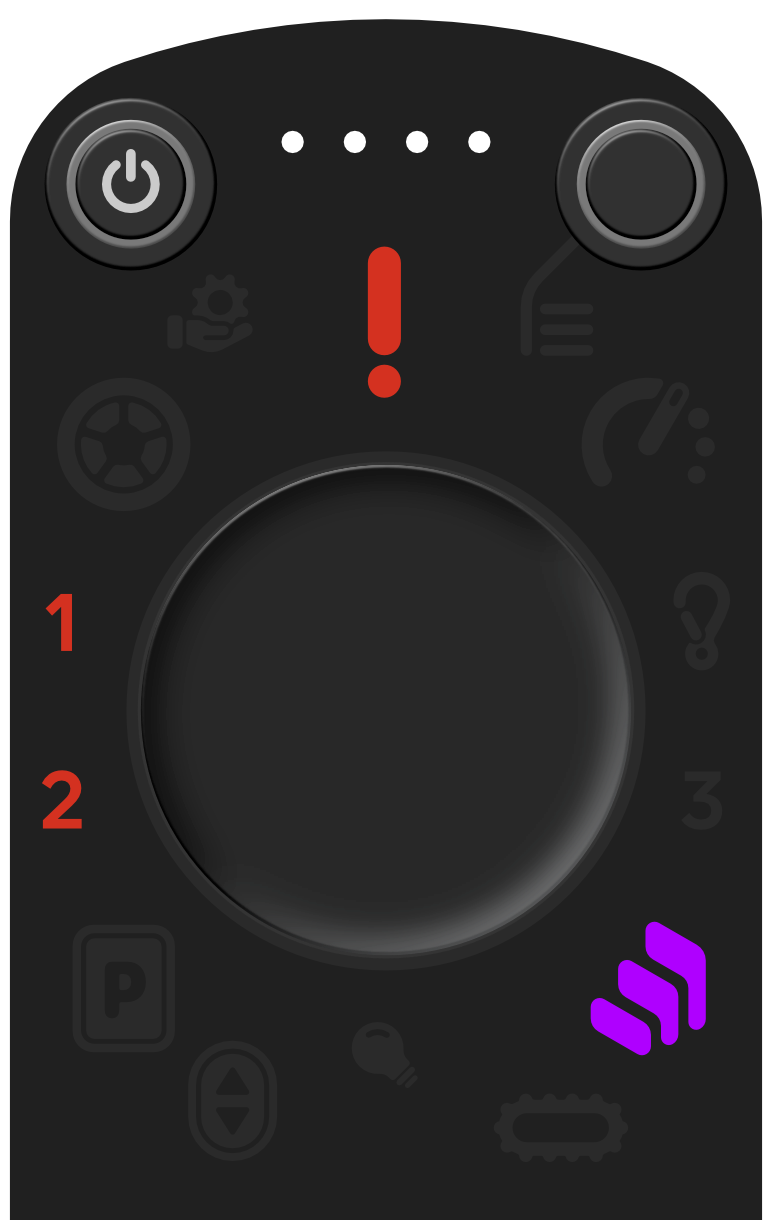End-of-stair Sensors
 |
Be careful with deactivated or defective end-of-stair sensors
If one or more error indicators flash or light up in red on the control panel when in stair mode (see Figure 65, “Display of an end-of-stair sensor error on the control panel”), one of the sensors is defective or you have deactivated it. Examine the sensor and clean it if necessary. Only disable the sensors if there is absolutely no other way to climb the stairs. If one or more sensors are defective, make sure that you manually trigger the end of stairs when you reach the upper landing and have the sensors repaired as soon as possible.
The wheelchair is equipped with two different types of sensors at the rear,which help to detect the end of a stair. Each sensor type is present twice. The end of the stairs is signaled by the following sensors:
Ultrasonic sensors (long range): two ultrasonic sensors measure the distance behind you to the next edge.
Infrared sensors (close range): two distance sensors measure how high the rear of the wheelchair is above the ground.
In case of a sensor malfunction or if the sensors have been deactivated manually, an error message is displayed in red on the control panel when in stair mode (see Figure 65, “Display of an end-of-stair sensor error on the control panel”).
 |
Deactivate end-of-stair sensors (not recommended)
You can disable the sensors in the app (ultrasound and infrared sensors separately). This can be helpful if they are malfunctioning and you still need to ascend a flight of stairs. However, take extra care that the transition to the upper level is triggered on time. Scewo recommends to never disable the sensors. See also Premature Detection of the End of Stairs on how to proceed if the end of the stair is detected prematurely.